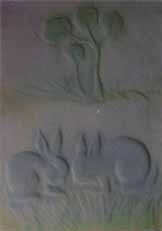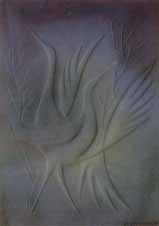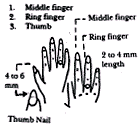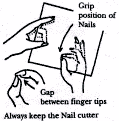Aesthetics of Nail Drawing
Shri P.T. Deshpande of IGNCA is an Artist, Cartographer and an expert in Nail Drawing. In an interview with Gautam Chatterjee he expressed that Nail Drawing can be of great help to visually handicapped persons.
GC: Shri Deshpande, you are an Artist-cum-Cartographer and a Nail Drawing Artist as well! Will you explain how all this started?
PTD: Basically I am an Artist by profession and cartography is my another calling. Since childhood I was fascinated by sculptures and all relief forms. My first exposure to Nail Drawing was through my elder brother who used to parctise it. I learnt this art from him in my school days and developed this art form over four decades; also added colour in Nail Drawing reliefs.
GC: Will you enlighten about the world of Nail Drawing artists?
PTD: The Nail Drawing is an ancient art lost in antiquity. Perhaps, all the civilizations have nurtured it in isolation in different era. In India as early as 2nd century A.D. Kalidasa referred it as Nakshta in his play Abhijnanasakuntalam. But the art form could not come out of its rudimentary states. Nevertheless, this art was passed on from generation to generation in isolated manner and people nurtured it more as pastime than a serious aesthetic endeavour.
GC: Will you clarify whether Nail Drawing is a craft or an art?
PTD: Till now Nail Drawing has remained as a small time craft, but I am trying to give it a status of an art form as I am creating Nail Drawing on a paper and adding colour and mixing pen and ink drawing as well to bring it in relief.
GC: Will you throw some light on other contemporary Nail Drawing artist?
PTD: There are Nail Drawing artists all over India and particularly in Southern peninsula. But there is no common platform for these artists to come together and exchange ideas. So most of us are not aware of each other’s existence and the type of work being done in this field.
GC: It is understood that you are experimenting with Nail Drawing which hold out great promise four our blind brethren. Will you explain the theme?
PTD: It is generally believed that visually handicapped persons cannot draw on paper as they cannot see! But I am confident that if they are taught Nail Drawing they can draw relief lines with nail and follow patterns. It is true that aesthetic sensibilities of these people are different than others, so they cannot be taught with conventional medium of paper and colours. These nail reliefs can encompass varied motifs from nature to human forms and one can go about to create geometrical designs in abstract dimensions.
GC: AS you have been experimenting with visually handicapped persons, will you narrate about their aesthetic sensibilities?
PTD: On a visit to a visually handicapped school, I found students are not taught drawing for the reason I have mentioned already. However, I found that they are taught Geometry with the help of wooden or plastic blocks. Taking cue from this concept I pondered over that the Nail Drawing can be utilized for this purpose. I have experimented this form with the students of one of the Delhi’s Blind School, for six months. They learnt to draw geometrical forms like straight line, triangle and square and combined these forms to create different patterns. On seeing those drawings no one could believe that those were done by visually handicapped. Interaction with them helped me to devise methodology of Nail Drawing in stages. I may like to share one experience which will clarify their aesthetic sensibility vis-à-vis a normal understanding. Once I drew a standing side-faced bird. In this dimension one can see only one leg of the bird. So I drew one leg of bird. A child after feeling the relief questioned “Uncle, this bird has only one leg”. The statement not only made me aware of their possible aesthetic dimension but also hurt me mentally that how little I know about them. Since then whenever I draw bird I make it a point to show both the legs of the bird.
GC: Will you kindly elaborate the scope of Nail Drawing for the benefit of visually handicapped!
PTD: As I said earlier the Nail Drawing should be taught to handipcapped persons to that they can engage themselves in some creative manner. Compared to other art forms one needs very little art material – nail those of thumb, middle finger and ring finger coupled with consistent practice and patience one can create this art form. I hope some agency working for the handicapped persons will give it necessary patronage to reach out globally as this art form has many promises.
GC: Your inquisitive mind always played with new mediums. Will you share some of your experiences?
PTD: I humbly say that I am preparing a comic book with colour relief illustrations with captions in Braille and in Roman Script which can be enjoyed by all handicapped persons. I am also preparing an alphabetical book for very young handicapped children. Apart from Nail Drawings I have used water and oil colour in conventional methods, and I have created carved out images of Ganesha and others from dry coconut shells with fibers. This I do with surgical knife to bring out sculptural effect.
GC: Shri Deshpande, thank you very much for your enlightened talk on aesthetic reliefs which bears many promises and possibilities.









